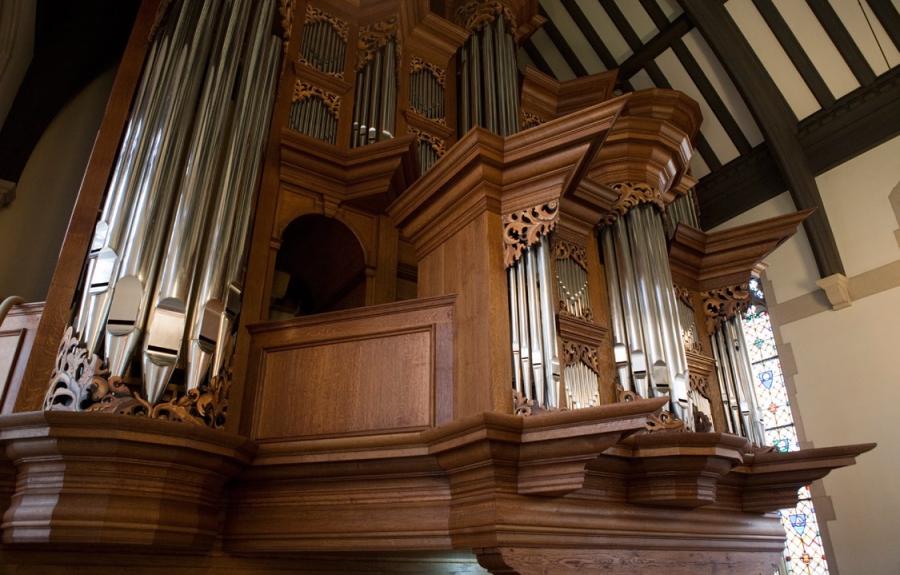Overview
The Cornell Baroque Organ in Anabel Taylor Chapel is the result of over seven years of research and an international, collaborative effort between Cornell’s College of Arts and Sciences and GOArt (Gothenburg Organ Art Center) of the University of Göteborg, Sweden. The project was led by builder Munetaka Yokota and spearheaded by University Organist Annette Richards. The organ’s tonal design is a recreation of the celebrated organ of Charlottenburg Palace, Berlin, built in 1706 by Arp Schnitger and destroyed in WWII. The construction of the Anabel Taylor instrument sought to recreate historical methods of pipe casting and woodwork, from wooden pegs and solid iron hand-forged nails to dovetail joints and wedge bellows fastened with cowhide and glue. The console reconstructs the Charlottenburg instrument as it appears in 20th-century photographs, down to the stop labels of Prussian blue and gold. The case, based on another contemporary Schnitger instrument at Clausthal-Zellerfeld, is typical of Schnitger’s design, with clearly delineated divisions of Hauptwerk, Rückpositif, and Pedal towers. It was constructed of white oak by local craftsman, Christopher Lowe, and holds 1,847 pipes, and over 740 feet of wooden trackers transferring movement from key to pallet. The bellows can be operated by calcants treading the bellows by foot up in the tower, warned when to start and stop by a small bell, rung from the console. Perfectly suited to the music of J. S. Bach, his contemporaries, and predecessors, the organ has also played a role in chamber music and choral concerts, and continues to inspire new music and experimentation from composers, performers, and researchers across Cornell.
Specification
| Hauptwerk | Rückpositiv | Pedal |
|---|---|---|
| 1) Principal 8′ | 1) Principal 8′ | 1) Principal 16′ |
| 2) Quintadena 16′ | 2) Gedact Lieblich 8′ | 2) Octav 8′ |
| 3) Floite Dues 8′ | 3) Octav 4′ | 3) Octav 4′ |
| 4) Gedact 8′ | 4) Floite Dues 4′ | 4) Nachthorn 2′ |
| 5) Octav 4′ | 5) Octav 2′ | 5) Rauschpfeife II |
| 6) Viol de Gamb 4′ | 6) Sesquialt II | 6) Mixtur IV |
| 7) Spitzflöit 4′ | 7) Waldflöit 2′ | 7) Posaunen 16′ |
| 8) Nassat 3′ | 8) Scharf III | 8) Trommet 8′ |
| 9) Super Octav 2′ | 9) Hoboy 8′ | 9) Trommet 4′ |
| 10) Mixtur V-VI | 10) Cornet 2′ | |
| 11) Trommet 8′ | ||
| 12) Vox Humana 8′ | |

